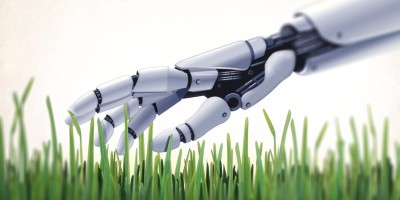Neuromodulation and brain–computer interfaces are rapidly evolving fields with distinct origins but with the shared goal of improving the lives of people with neurological and psychiatric disorders or injuries. Their increasing technological overlap provides new opportunities for collaborative work and rapid progress in neurotechnology.

References
Herron, J. A. et al. Cortical brain-computer interface for closed-loop deep brain stimulation. IEEE Trans. Neural Syst. Rehabil. Eng. 25, 2180–2187 (2017).
Swann, N. C. et al. Adaptive deep brain stimulation for Parkinson’s disease using motor cortex sensing. J. Neural Eng. 15, 046006 (2018).
Kremen, V. et al. Integrating brain implants with local and distributed computing devices: a next generation epilepsy management system. IEEE J Transl. Eng. Health Med. 6, 2500112 (2018).
Cagle, J. N. et al. Embedded human closed-loop deep brain stimulation for tourette syndrome: a nonrandomized controlled trial. JAMA Neurol. 79, 1064–1068 (2022).
Hochberg, L. R. et al. Neuronal ensemble control of prosthetic devices by a human with tetraplegia. Nature 442, 164–171 (2006).
Jarosiewicz, B. et al. Virtual typing by people with tetraplegia using a self-calibrating intracortical brain-computer interface. Sci. Transl. Med. 7, 313ra179 (2015).
Simeral, J. D. et al. Home use of a percutaneous wireless intracortical brain-computer interface by individuals with tetraplegia. IEEE Trans. Biomed. Eng. 68, 2313–2325 (2021).
Flesher, S. N. et al. A brain-computer interface that evokes tactile sensations improves robotic arm control. Science 372, 831–836 (2021).
Vansteensel, M. J. et al. Fully implanted brain-computer interface in a locked-in patient with ALS. N. Engl. J. Med. 375, 2060–2066 (2016).
Mitchell, P. et al. Assessment of safety of a fully implanted endovascular brain-computer interface for severe paralysis in 4 patients: the Stentrode With Thought-Controlled Digital Switch (SWITCH) study. JAMA Neurol. 80, 270–278 (2023).
Acknowledgements
The content is solely the responsibility of the authors and does not necessarily represent the official views of the National Institutes of Health, or the Department of Veterans Affairs or the United States Government.
Author information
Authors and Affiliations
Corresponding author
Ethics declarations
Competing interests
J.H. and T.D. were previously employed by Medtronic and were involved in the development of the Medtronic Activa PC+S (T.D.) and the Medtronic Summit RC+S (J.H. and T.D.). P.S. has received investigational devices, at no charge, from Medtronic, receives support for clinical fellowship training from Medtronic and Boston Scientific, and is compensated by Neuralink for time serving on the Data Safety and Monitoring Board for the Neuralink PRIME study. G.A.W. has licensed neuromodulation intellectual property to Cadence Neuroscience and has received Medtronic investigational devices free of charge as part of the NIH Brain Initiative. T.D. is a board member of Cortec Neuro, is a co-founder and non-executive chair of Mint Neuro, is a co-founder and director of Amber Therapeutics, and was a co-organizer for the United States National Academies meeting on advancing the adoption of brain stimulation devices. V.K., H.D., J.S. and D.B. declare no competing interests.
Rights and permissions
About this article
Cite this article
Herron, J., Kremen, V., Simeral, J.D. et al. The convergence of neuromodulation and brain–computer interfaces. Nat Rev Bioeng (2024). https://doi.org/10.1038/s44222-024-00187-0
Published:
DOI: https://doi.org/10.1038/s44222-024-00187-0
- Springer Nature Limited


